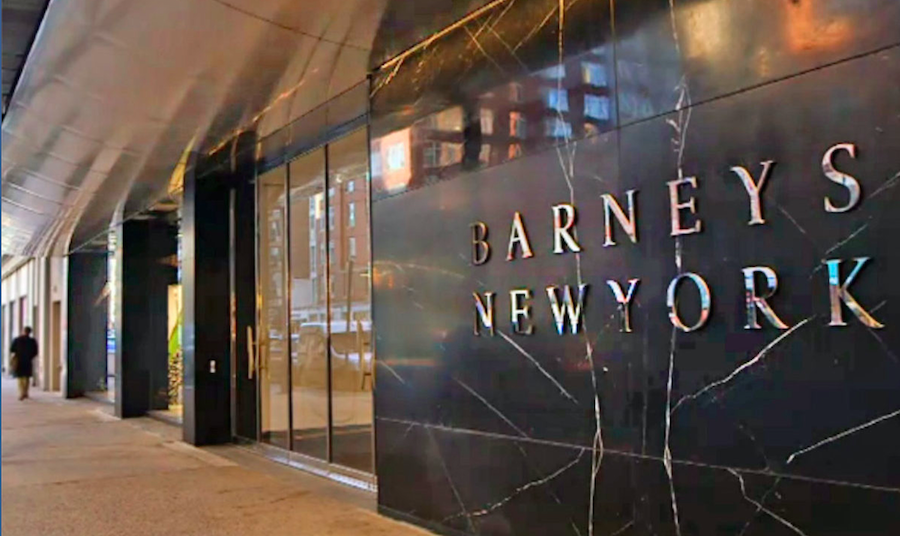By Thomas J. Ryan
<span style="color: #999999;">Barneys New York Inc. filed for bankruptcy protection with plans to close 15 of its 22 stores. The 96-year-old fashion-forward luxury retailer plans to seek a buyer for the slimmed-down business and negotiate rent reductions with landlords.
CNBC has previously reported that, without a buyer, the company will likely liquidate. The move had been telegraphed for several weeks as the retailer sought to avert bankruptcy by finding a partner or buyer.
“Like many in our industry, Barneys New York’s financial position has been dramatically impacted by the challenging retail environment and rent structures that are excessively high relative to market demand,” said Daniella Vitale, CEO, Barneys in a statement. “In response to these obstacles, the Barneys New York Board and management team have taken decisive action by entering into a court-supervised process, which will provide the company the necessary tools to conduct a sale process, review our current leases and optimize our operations.”
Barneys, which operates 13 department stores and nine warehouse stores, has secured $75 million in new capital from affiliates of Hilco Global and the Gordon Brothers Group which, combined with operating cash flow, will help the retailer meet its financial commitments. Gordon Brothers and Hilco Global specialize in selling assets for distressed companies.
As a part of the chapter 11 process, Barneys will close 15 stores including three downtown stores in Chicago, Las Vegas and Seattle; five smaller concept stores; and seven Barneys Warehouse locations.
In court papers, Barneys is asking court permission to reject 15 store leases across the country to save the company $2.2 million per month in rent and related expenses,
Five other stores will remain open, including its celebrated Madison Avenue flagship in New York, as well as downtown stores in Boston, San Francisco and Beverly Hills. Barneys Warehouse stores at Woodbury Common Premium Outlets (Woodbury, NY) and at San Francisco Premium Outlets (Livermore, CA) will also remain open as will the company’s two e-commerce sites.
The chain listed $200 million of funded liabilities, with $800 million of revenue in 2018, according to papers filed in U.S. Bankruptcy Court for the Southern District of New York. Barneys said it has about $120 million of federal net operating losses that could be used to offset future taxable income. The retailer currently employs 2,300 people.
CNBC had reported at the end of July that Barneys was starting to raise financing for a bankruptcy filing that was caused in part by a rent hike at its Manhattan flagship. Rent at Barneys’ flagship on Madison Avenue, owned by Ashkenazy Acquisition, jumped from roughly $16 million to approximately $30 million in January, nearly wiping out its EBITDA (earnings before interest, taxes, depreciation, and amortization.)
Barneys is also one of many department stores, also including Nordstrom, Saks-owner Hudson’s Bay, Neiman Marcus, J.C. Penney, and Macy’s struggling with the shift to online shopping as well as consumers increasingly purchasing goods directly from brands. Luxury retailing is also seeing heightened competition from new rivals like Net-a-Porter and Moda Operandi.
“The entire industry is in survival mode,” Vitale told employees earlier this year, according to a recording obtained by CNBC. “The model is not working, it’s not working for Neiman [Marcus], it’s not working for Saks, it’s not working for us, it’s not working for Nordstrom.”
<span style="color: #999999;">Founded as a men’s retailer in 1923 in Manhattan, Barneys became the icon of high fashion and innovation for women and men in the 1970s. It went bankrupt once before in 1996, after a falling out with the company’s then-owner, Japanese department store company Isetan.
In 2012, Perry Capital, the hedge fund of New York investor Richard Perry, took control Barneys in a $540 million debt-for-equity swap. Although the fund was closed down in 2016, Perry continues to own Barneys, with a 72 percent stake. He tried to sell the chain, but ultimately couldn’t find a new buyer or make the company’s finances work, according to Women’s Wear Daily.
The bankruptcy petition lists more than 5,000 creditors. Among the vendors landing on the top-30 unsecured creditors list were The Row, owed $3.7 million; Celine, $2.7 million; Yves Saint Laurent America, $2.2 million; Balenciaga America, $2.1 million; Givenchy Corporation/LVMH, $1.94 million; Gucci, $1.8 million; and Prada, $1.6 million.
Vendors owed between $1 million and $1.5 million include GGR U.S., owed $1,46 million; Azzedine Alaia, $1.4 million; Margiela USA, $1.37 million; CL (Christian Louboutin) U.S. Distribution Corporation, $1.28 million; and Moncler USA, $1.2 million.
The remaining vendors on the top-30 list of unsecured creditors were Chloe, owed $995,965, Shiseido Cosmetics, $990,192; Isaia Corp, $942,977; Chanel, $877,516; Loewe (LVMH Fashion), $877,323; Canada Goose, $870,103; Etoille 660 Madison, $866,977; Tribeca Design Studio, $854,691; Manolo Blahnik, $831,984; Rag & Bone, $823,234; and Owenscorp Italia Spa, $816,999.
Among the landlords landing on the unsecured creditors’ list were Jenel Management, holding an unpaid bill of $5.98 million; Thor Equities owed $2.2 million; Stockton Street Properties owed $953,528; and The Building At 575 Fifth Office Owner owed $815,240.
Other unsecured creditors include Google with an outstanding debt claim of $1.7 million; Rakuten Marketing (formerly Linkshare Corp.) owed $1.58 million; and FedEx owed $929,944.
Barneys is being represented by Kirkland & Ellis LLP—which previously managed the highly publicized bankruptcies of retail giants Toys ‘R’ Us, Payless ShoeSource Inc. and the Gymboree Corp.
The case is Barneys New York Inc., 19-36300-cgm, U.S. Bankruptcy Court for the Southern District of New York (Poughkeepsie).
Photo courtesy Barneys
















